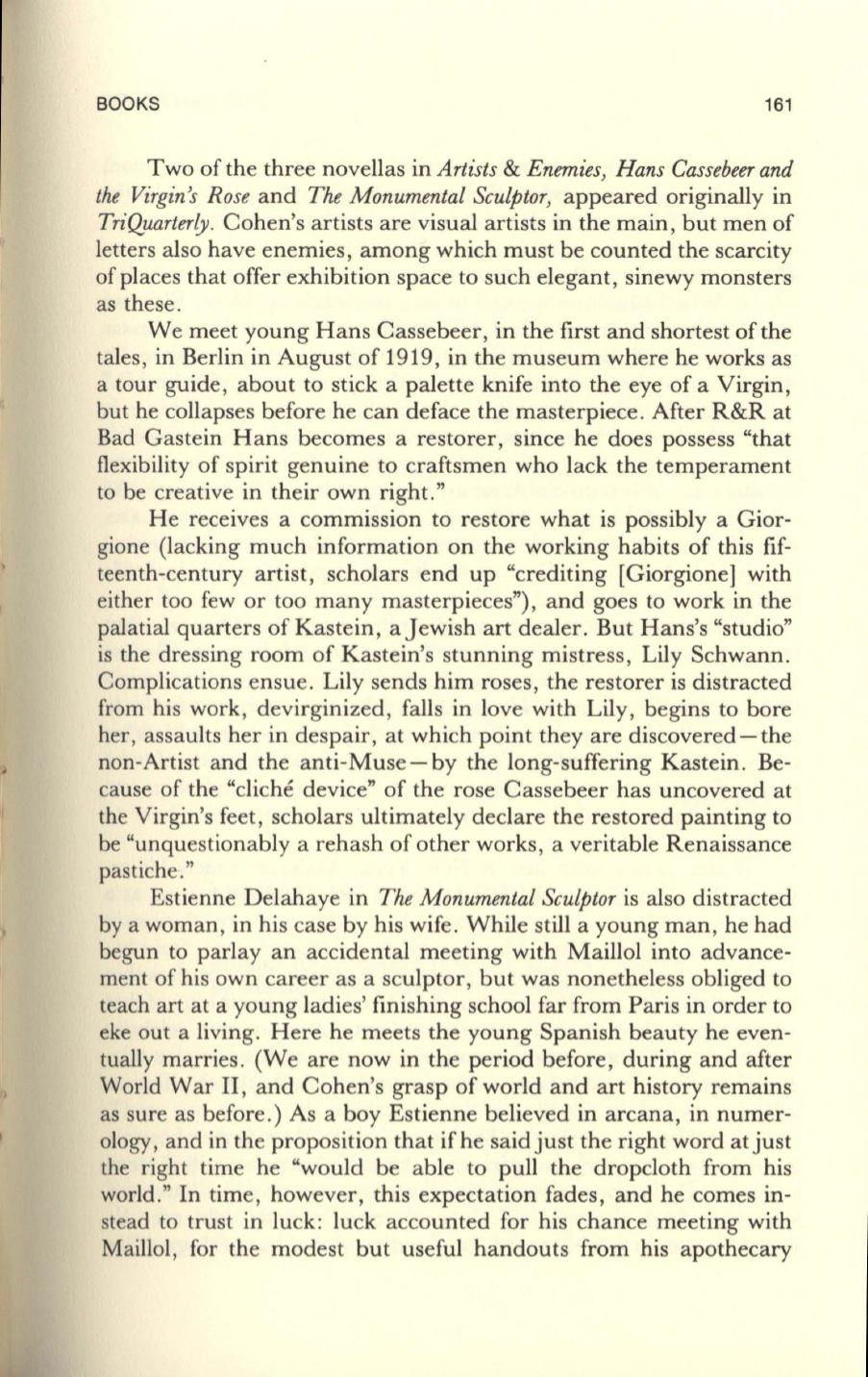
BOOKS
161
Two of the three novellas in
Artists
&
Enemies, Hans Cassebeer and
the Virgin 's Rose
and
The Monumental Sculptor,
appeared originally in
TriQuarterly.
Cohen's artists are visual artists in the main, but men of
letters also have enemies, among which must be counted the scarcity
of places that offer exhibition space to such elegant, sinewy monsters
as these.
We meet young Hans Cassebeer, in the first and shortest of the
tales, in Berlin in August of 1919, in the museum where he works as
a tour guide , about to stick a palette knife into the eye of a Virgin,
but he collapses before he can deface the masterpiece. After R&R at
Bad Gastein Hans becomes a restorer, since he does possess "that
flexibility of spirit genuine to craftsmen who lack the temperament
to be creative in their own right."
He receives a commission to restore what is possibly a Gior–
gione (lacking much information on the working habits of this fif–
teenth-century artist , scholars end up "crediting [Giorgione] with
either too few or too many masterpieces"), and goes to work in the
palatial quarters of Kastein, aJewish art dealer. But Hans's "studio"
is the dressing room of Kastein's stunning mistress, Lily Schwann.
Complications ensue. Lily sends him roses, the restorer is distracted
from his work , devirginized , falls in love with Lily, begins to bore
her, assaults her in despair, at which point they are discovered - the
non-Artist and the anti-Muse-by the long-suffering Kastein . Be–
cause of the "cliche device" of the rose Cassebeer has uncovered at
the Virgin's feet, scholars ultimately declare the restored painting to
be "unquestionably a rehash of other works, a veritable Renaissance
pastiche ."
Estienne Delahaye in
The Monumental Sculptor
is also distracted
by a woman , in his case by his wife. While still a young man, he had
begun to parlay an accidental meeting with Maillol into advance–
ment of his own career as a sculptor, but was nonetheless obliged to
teach art at a young ladies' finishing school far from Paris in order to
eke out a living. Here he meets the young Spanish beauty he even–
tually marries . (We are now in the period before, during and after
World War II, and Cohen's grasp of world and art history remains
as sure as before.) As a boy Estienne believed in arcana, in numer–
ology, and in the proposition that if he said just the right word at just
the right time he "would be able to pull the dropcloth from his
world." In time, however, this expectation fades, and he comes in–
stead to trust in luck: luck accounted for his chance meeting with
Maillol, for the modest but useful handouts from his apothecary


